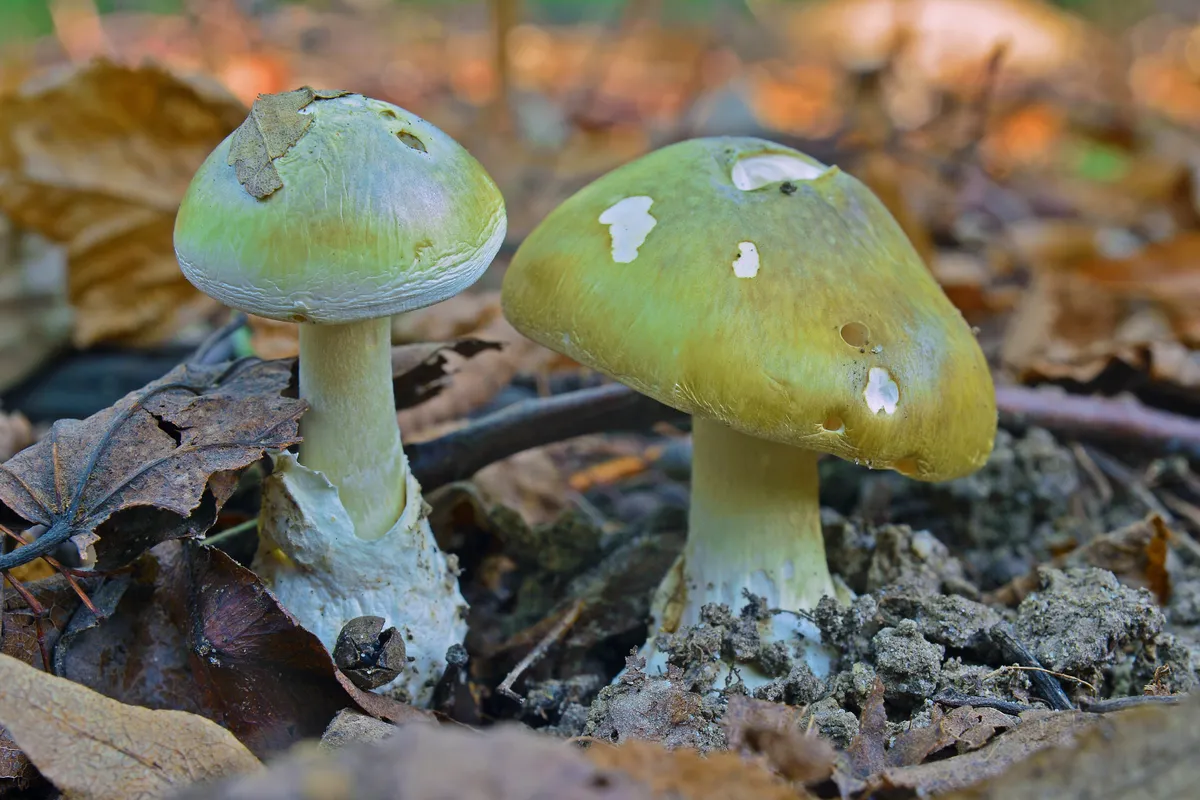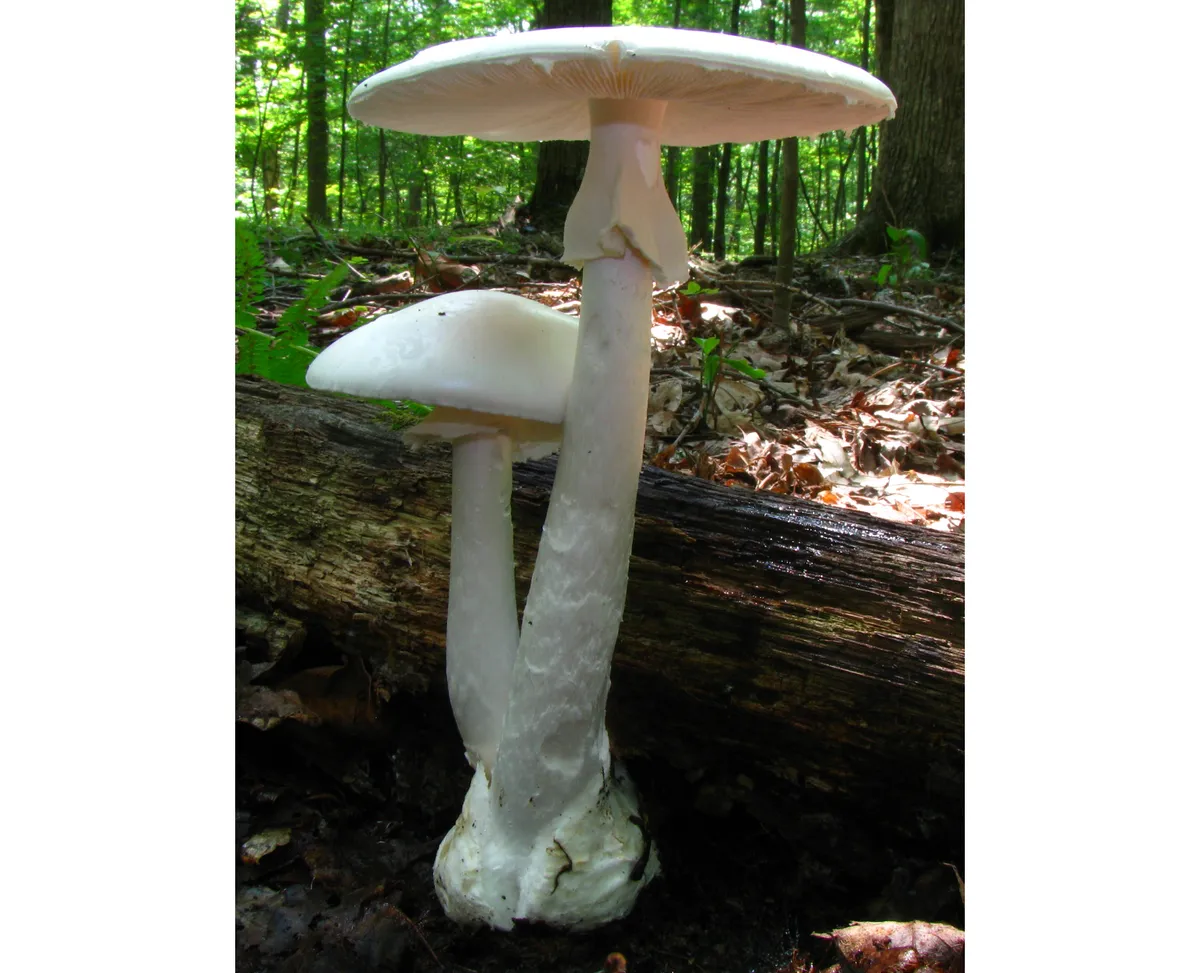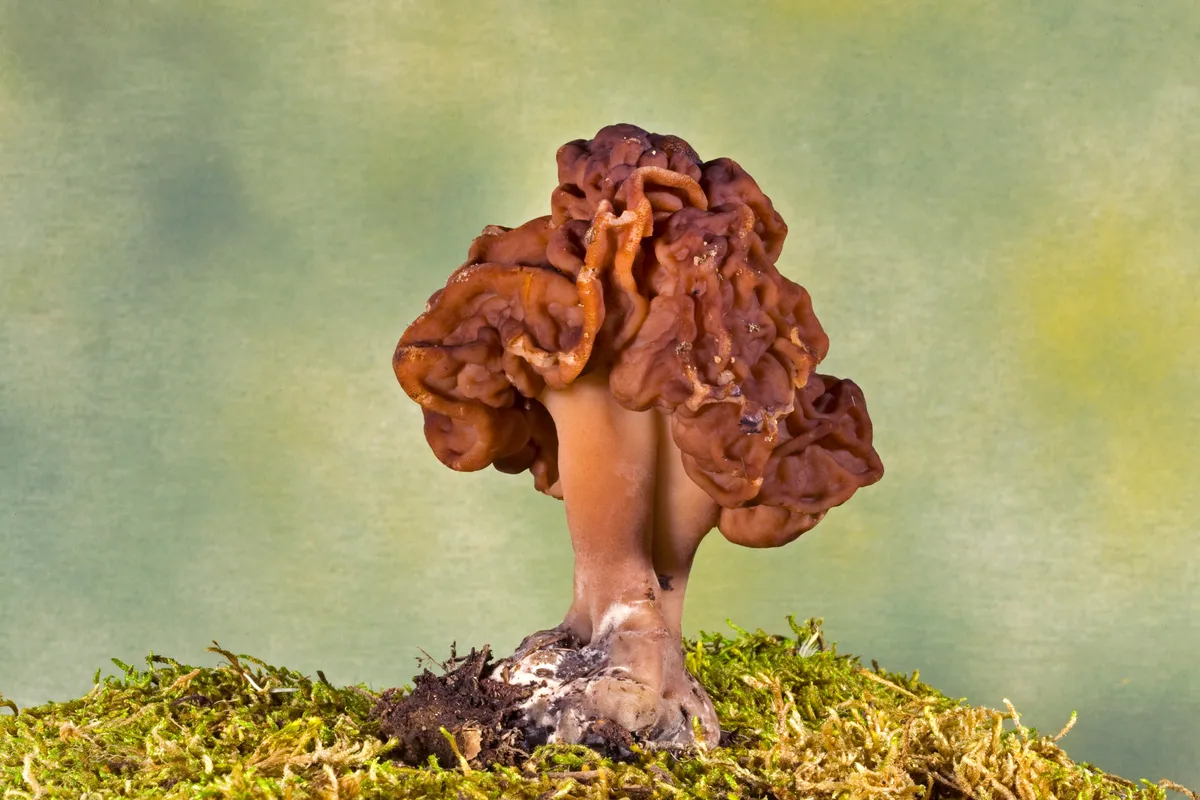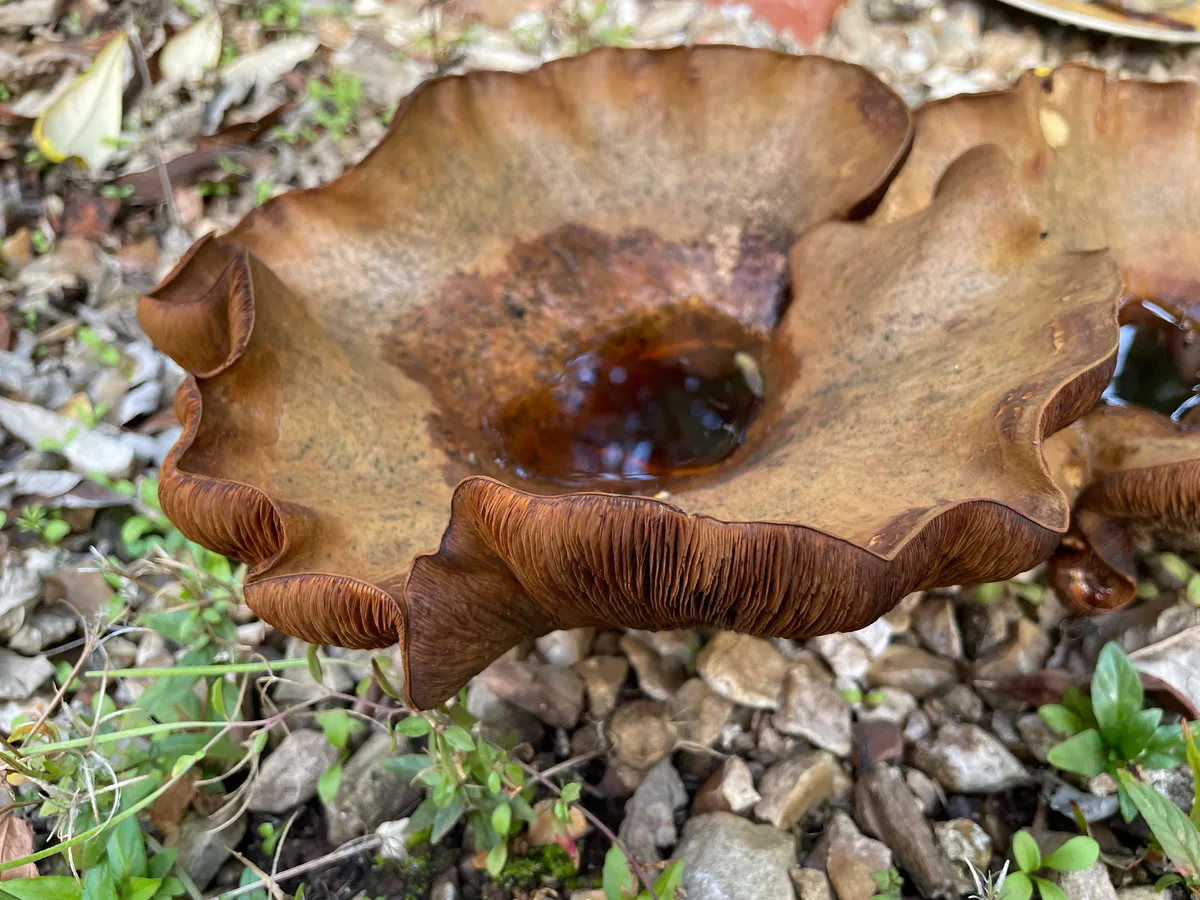Many species of fungi contain toxins for the extract same reason that many plants and animals do – self-defence. Like most living things, mushrooms have evolved mechanisms to keep themselves alive so that they can reproduce.
How do mushrooms reproduce?
In the case of mushrooms, reproduction involves growing fruiting bodies (the bit you see above ground) and releasing spores. Unfortunately in doing so they leave themselves vulnerable to attack! And unlike animals, they can’t simply run away.
They have quite a small window in which they can drop their spores, and for many species if they are eaten the spores are lost (although there are some species that spread their spores through being eaten and pooped out). Poisons and toxins can therefore come in handy in keeping wannabe predators away. Over time animals learn what mushrooms to avoid and which are safe to eat.
Mistakes are sometimes made, however, as you will see on this list. Poisonous mushrooms can be mistaken for edible ones, to sometimes fatal effect. Read on to learn about 9 of the most dangerous and deadly mushrooms (and other fungi).
9 most poisonous mushrooms
Death cap (Amanita phalloides)

These notorious and highly toxic mushrooms have a suitably alarming name. Found throughout Europe, particularly in oak or beech woodlands, death caps are responsible for the majority of all fatal mushroom poisonings. This is partly because, unfortunately, they resemble several edible and popularly eaten species, such as Caesar's mushroom.
They also, apparently, taste quite pleasant. Ingestion leads to liver failure, kidney failure, and death. Foragers be very wary! Not all death cap deaths have been accidental, however, with these mushrooms being suspected in a number of famous assassinations, including that of Roman Emperor Claudius in 54AD by his wife Agrippina.
Destroying angels (Amanita bisporigera, A. ocreata, A. virosa)

A group of three closely related species that share a deadly name, destroying angels can be found in woodlands, grassy meadows, and lawns, across Europe and North America. Like death caps, they have a white cap and gills, and also like death caps contain amatoxins. Amatoxins are extremely toxic compounds that travel through the bloodstream and disrupt cell metabolism, consequently damaging many organs including the liver and heart. Just a small amount can lead to death - for example, that contained in as little as half a destroying angel cap.
Common conecap (Pholiotina rugosa)

Another species that shares these toxic compounds is Pholiotina rugosa, a fairly nondescript-looking, red-brown mushroom common in the Pacific Northwest, but found in Europe, Asia and North America too. Due to their similar conical brown caps, they are sometimes mistaken for Psilocybe, or magic mushrooms.
You would get much more than a bad trip with these, however. After about 6-24 hours after ingestion, you would experience some very nasty gastrointestinal symptoms, often initially mistaken for food poisoning, swiftly followed by liver failure and, if you are unlucky, eventual death.
Webcaps (Cortinarius species)

This next group of poisonous mushrooms is much slower to kill you. This is a large genus of over 2000 species, only some of which are poisonous but all of which you should be wary of, due to difficulties in distinguishing them. Cortinarius rubellus (the deadly webcap) and Cortinarius orellanus (the fools webcap) are the ones that you really don't want to pick, however.
Both of these contain the mycotoxin Orellanine which affects the kidneys. This toxin takes an insidiously long time to take effect, with symptoms not appearing for up to two weeks after ingestion, by which time it is too late to do much about it - the kidney damage is already done. There is no known antidote and the primary treatment is hemodialysis. Without treatment, death occurs.
Autumn Skullcap (Galerina marginata)

Galerina marginata has garnered itself a whole slew of dastardly-sounding names. As well as the spooky autumn skullcap, it is also known as the deadly skullcap and even funeral bell! Like many already on this list, it is packed with liver and kidney-disrupting amatoxins, and ingestion leads to severe gastrointestinal distress, organ failure, and even death if not treated swiftly.
As with Pholiotina rugosa several fatal poisonings involving this little brown species are suspected to have occurred due to foragers mistaking them for hallucinogenic mushrooms. They are found throughout the Northern Hemisphere and generally grow in small clusters on or near conifer wood.
Deadly Dapperling (Lepiota brunneoincarnata)

This jauntily named mushroom is not so alarmingly coloured or easily spotted as the fire coral is, unfortunately. Its innocuous white-brown appearance means that it is fairly easily mistaken for a few different edible species (including the edible grey knight (Tricholoma terreum) and fairy ring champignon (Marasmius oreades)), leading to accidental, and sometimes sadly fatal, poisonings. As these mushrooms grow in grassy areas, often these mistakes occur when people pick from their own gardens. In 2010 four members of the same family died after consuming dapperlings.
False Morel (Gyromitra species)

The aptly named false morel almost looks like it’s designed to trick an unwary forager. With its brain-like cap and creamy white stem, it closely resembles the prized and very tasty morel mushroom. Unlike a true morel, however, the false morel contains a deadly surprise, the toxin gyromitrin. When gyromitrin is broken down in the body it becomes monomethylhydrazine, a toxic compound better known for its use as a rocket fuel! This acts on the central nervous system causing a variety of unpleasant neurological and gastrointestinal symptoms, and in severe cases can result in death.
Fly agaric (Amanita muscaria)

Perhaps the most iconic and well known of all mushrooms is the fly agaric. This classic red and white spotted toadstool is a staple of children’s picture books, works of art, garden ornaments, and even video games. They have become associated with magical creatures, fairies and gnomes in particular.
They do however have a darker side. These mushrooms contain several different bioactive compounds, including those both toxic and psychoactive. Though not nearly as dangerous and deadly as some on this list, historical deaths due to ingestion have been reported and they are not to be trifled with. The symptoms are unpredictable and may range from delirium and hallucinations to seizures and comas. Part of the risk involved in eating these comes from the sporadic and sometimes dangerous behaviour that it induces.
Brown roll-rim (Paxillus involutus)

This common and nondescript mushroom was once widely regarded as edible once cooked and was widely eaten in Central and Eastern Europe until the 1940s. However in 1944 it was found to be responsible for the death of German mycologist Julius Schäffer - the only professional mycologist known to have died from fungus poisoning.
He had eaten a succession of meals containing roll-rims. It is now known that the mushrooms can trigger an autoimmune reaction, especially in people who have eaten them over a prolonged period of time - like the unfortunate Julius. The body attacks its own red blood cells which may lead to kidney failure, acute respiratory failure, and even death.
Enjoy this list? Check out our rundown of the very best fungi books, so you can read more about fascinating fungi!
Learn how to identify different types with our British woodland fungi guide
